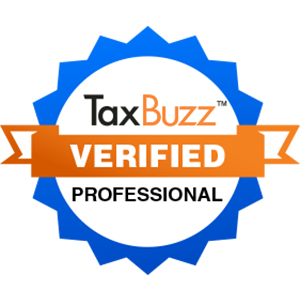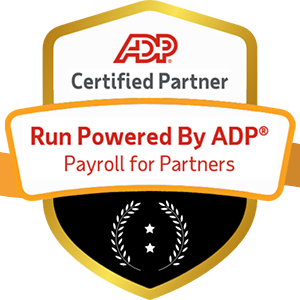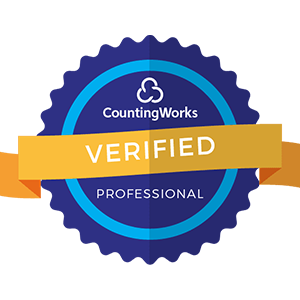In an era of rapid technological advancement and evolving workplace dynamics, forward-thinking organizations are reimagining their talent acquisition strategies to build resilient, future-ready teams.
---
The Great Talent Transformation
The workforce landscape is shifting at an unprecedented pace. What worked in talent acquisition five years ago may not just be outdated—it could be counterproductive. As we stand at the intersection of technological revolution and generational change, the question isn't whether your talent strategy needs updating, but how quickly you can adapt to stay competitive.
"The half-life of learned skills is shrinking rapidly. Companies that don't evolve their hiring practices now will find themselves with a talent mismatch crisis within the next five years."
— Dr. Sarah Chen, Future of Work Research Institute
---
Key Workforce Trends Reshaping Talent Needs

1. The AI-Human Collaboration Era
- 60% of companies plan to increase hiring for AI-adjacent roles in the next three years
- Focus shifting from "AI replacement" to "AI augmentation" skills
- New hybrid roles emerging: AI trainers, human-machine interaction specialists, algorithmic auditors
2. The Distributed Work Revolution
- 73% of organizations expect remote/hybrid work to become permanent
- Geographic talent pools expanding globally
- Premium on self-directed, digitally fluent professionals
3. The Continuous Learning Imperative
- 50% of all employees will need reskilling by 2025
- Growth mindset becoming as valuable as technical expertise
- Learning agility now a top-tier hiring criterion
4. The Purpose-Driven Talent Pool
- 83% of millennials and Gen Z prioritize company values alignment
- Sustainability and social impact roles seeing 35% growth
- Mission-driven recruitment becoming competitive advantage
---
The Future-Ready Skills Framework
Technical Skills 2.0
- Data literacy and analytics
- Cybersecurity awareness
- Digital collaboration tools mastery
- AI/ML fundamentals (not just for tech roles)
Human-Centric Skills
- Emotional intelligence and empathy
- Cross-cultural communication
- Creative problem-solving
- Ethical decision-making
Adaptive Skills
- Change management
- Continuous learning ability
- Resilience and stress management
- Systems thinking
---
Practical Strategies for Future-Proofing Your Talent Acquisition
Strategy 1: Conduct a Skills Gap Future-Audit
Immediate Actions:
- [ ] Map current workforce capabilities against projected 2030 needs
- [ ] Identify critical skill gaps in your industry
- [ ] Assess competitors' talent strategies
- [ ] Survey current employees on emerging skill interests
Tools to Use:
- LinkedIn Skills Assessment data
- Industry skill forecasting reports
- Internal career development surveys
Strategy 2: Build Adaptable Job Descriptions
Instead of This:
"5+ years experience in [specific software]"
Try This:
"Demonstrated ability to quickly master new technologies with foundation in [core principles]"
Key Principles:
- Emphasize learning potential over current knowledge
- Include "future skills" in job requirements
- Write for diverse backgrounds and experiences
Strategy 3: Diversify Your Talent Pipeline
Innovative Sourcing Approaches:
- Partner with coding bootcamps and alternative education providers
- Tap into "returnship" programs for career-changers
- Explore international remote talent pools
- Build relationships with professional reskilling organizations
---
Real-World Success Stories
Case Study 1: TechCorp's Predictive Hiring Model
Challenge: Anticipating talent needs for emerging technologies
Solution: Implemented AI-powered workforce planning that analyzes market trends, project pipelines, and skill evolution patterns
Results:
- 40% reduction in time-to-fill for critical roles
- 60% improvement in new hire retention
- Successfully scaled teams for three new product lines
Case Study 2: Global Services Inc.'s Learning-First Recruitment
Challenge: Finding candidates with rapidly evolving digital skills
Solution: Shifted focus to hiring for learning ability and providing intensive upskilling programs
Results:
- Expanded talent pool by 200%
- Achieved 90% skill proficiency rates within 6 months
- Created industry-leading employee development reputation
---
The ROI of Future-Focused Hiring

Financial Benefits
- 25% lower recruitment costs through expanded talent pools
- 35% faster time-to-productivity with adaptable hires
- 50% higher employee retention rates
Strategic Advantages
- Enhanced organizational agility
- Competitive edge in emerging markets
- Stronger employer brand among top talent
---
Your Future-Ready Talent Acquisition Checklist
Immediate (Next 30 Days)
- [ ] Assess current job descriptions for future-readiness
- [ ] Research emerging skills in your industry
- [ ] Audit your current sourcing channels
- [ ] Survey hiring managers on evolving role requirements
Short-term (Next 90 Days)
- [ ] Redesign interview processes to assess adaptability
- [ ] Develop partnerships with alternative education providers
- [ ] Create internal mobility programs
- [ ] Implement skills-based hiring pilots
Long-term (Next 12 Months)
- [ ] Build predictive workforce planning capabilities
- [ ] Establish continuous learning culture
- [ ] Create talent pipeline for emerging roles
- [ ] Develop remote hiring expertise
---
Looking Ahead: The Next Evolution
As we peer into the future of work, one thing remains clear: adaptability will be the defining characteristic of successful organizations. The companies that thrive won't be those that perfectly predict the future, but those that build systems flexible enough to evolve with it.
The future of talent acquisition isn't about finding the perfect candidate for today's role—it's about identifying individuals who can grow into tomorrow's opportunities.
---
Ready to Transform Your Talent Strategy?
The future of work is arriving faster than ever. Organizations that act now to align their talent acquisition with emerging workforce needs will find themselves at a significant competitive advantage.
What's your next step toward building a future-ready talent strategy?
---
About the Author: [Author bio and credentials]
Resources for Further Reading:





